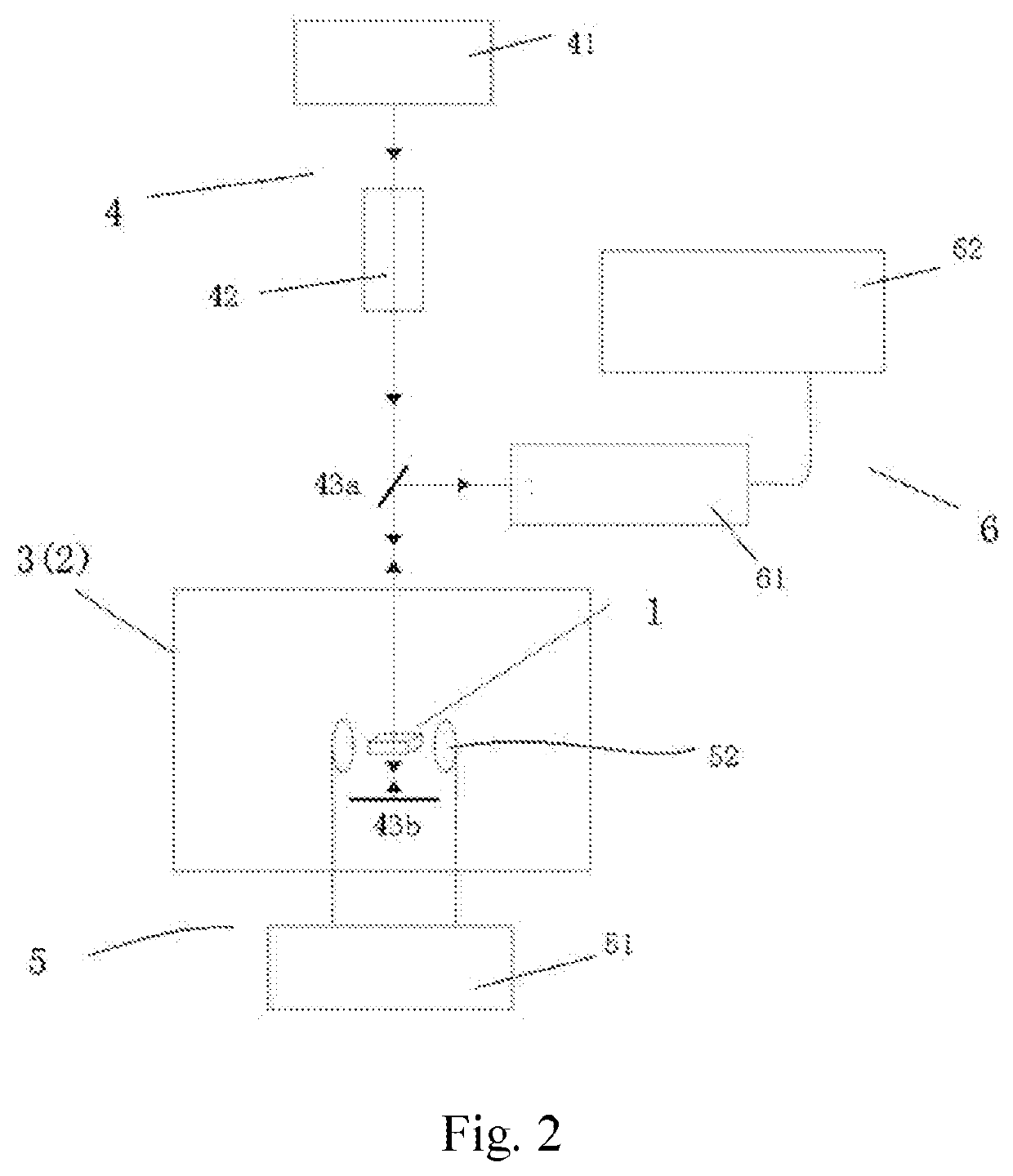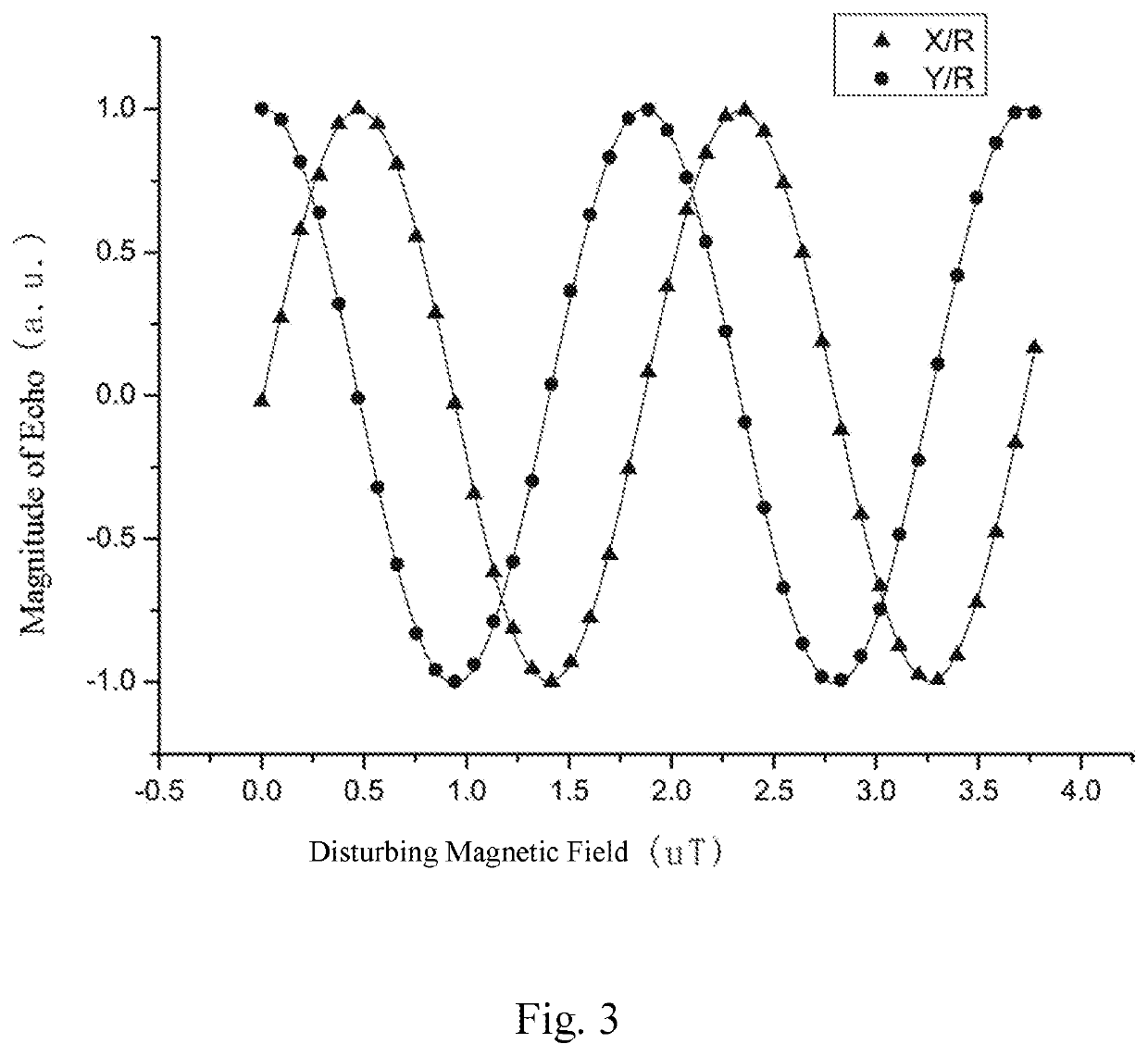Quantum sensor based on rare-earth-ion doped optical crystal and use thereof
a quantum sensor and optical crystal technology, applied in the field of quantum sensors, can solve the problems of extremely prone to disturbance and weak quantum system coheren
- Summary
- Abstract
- Description
- Claims
- Application Information
AI Technical Summary
Benefits of technology
Problems solved by technology
Method used
Image
Examples
example 1
Quantum Sensor Based on Rare-Earth-Ion Doped Optical Crystals
[0113]FIG. 2 is a schematic diagram of an apparatus in an Example of a quantum sensor based on a rare-earth-ion doped optical crystal. As shown in FIG. 2, this apparatus mainly comprises the following parts:[0114]a rare-earth-ion doped optical crystal 1, a low temperature providing unit 2, a constant magnetic field generation unit 3, a light field generation unit 4, a pulsed magnetic field generation unit 5, and a heterodyne Raman scattering light field detection and analysis unit 6.
[0115]Here, the rare-earth-ion doped optical crystal unit 1 is used to achieve detection of an electromagnetic field and generates sensing signals.
[0116]The low temperature providing unit 2 provides a low temperature operating environment to the rare-earth-ion doped optical crystal.
[0117]The constant magnetic field generation unit 3 is used to apply a constant magnetic field. The constant magnetic field generation unit 3 may be integrated to th...
example 2
Measurement of External Disturbing Magnetic Field
[0137]Magnetic field measurement was performed by using the quantum sensor of Example 1.
[0138]Furthermore, in this Example, the zero first-order Zeeman (ZEFOZ) effect was used to elongate the coherence time of Eu ions by providing a constant magnetic field generated by the constant magnetic field generator 3. At a ZEFOZ point (wherein the magnetic field was about 1.28T, and the orientation of the magnetic field in a crystal D1*D2*b coordinate system was [−0.535, −0.634, 0.558]), the coherence time of spin of the ions was about 30 s. The probe had the longest operation time here, and it was suitable for detection of ultra-low frequency signals. However, the sensitivity of magnetic detection is not high due to poor response to the magnetic field. When the magnetic field was higher than the ZEFOZ point by 200 G, i.e., at 1.30 T, the coherence time was measured to be about 1.5 s by using a spin echo. The magnetic field response was good h...
example 3
Dynamical Decoupling Method
[0144]Further, in addition to a simple spin echo method, a complex dynamical decoupling sequence may be further applied to detect an external alternating magnetic field. A “dynamical decoupling sequence” means that a periodic high-speed flip of spin states of rare-earth-ions is achieved by periodic microwave sequences so as to elongate further the coherence time and the operating time of the probe.
[0145]In this Example, the specific solution was that a pulsed magnetic field generation unit generated a XY-8 dynamical decoupling sequence. The method of performing this sequence was first applying a 90° pulse and applying the following periodic sequence after an interval of 22.248 ms: X-Y-X-Y-Y-X-Y-X, wherein X corresponded to a 180° pulse in a 0° phase and Y corresponded to a 180° pulse in a 90° phase, and the distance between every two 180° pulses was 44.496 ms. The generated echo was finally detected to extract the phase information caused by the disturbing...
PUM
 Login to View More
Login to View More Abstract
Description
Claims
Application Information
 Login to View More
Login to View More - R&D
- Intellectual Property
- Life Sciences
- Materials
- Tech Scout
- Unparalleled Data Quality
- Higher Quality Content
- 60% Fewer Hallucinations
Browse by: Latest US Patents, China's latest patents, Technical Efficacy Thesaurus, Application Domain, Technology Topic, Popular Technical Reports.
© 2025 PatSnap. All rights reserved.Legal|Privacy policy|Modern Slavery Act Transparency Statement|Sitemap|About US| Contact US: help@patsnap.com



